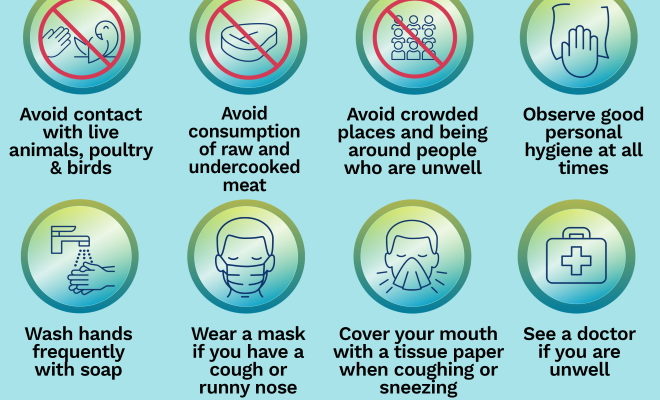
Health x Wellness
Wuhan Virus: What happens at the GP
The Severe Acute Respiratory Syndrome (SARS) took eight months from detection to containment in 2002 – 2003. It remains unclear what path The Wuhan Virus, or 2019-NCOV, might take before a similar result happens.
SARS had slightly more than 8,000 confirmed cases in 2003; MERS has about 2,500 known cases since it started spreading in 2012. According to the National Health Commission, there are already 20,400 nationwide in China.
Available evidence seems to suggest a possible higher rate of human-to-human transmission than that of SARS.
Dr. Anthony S. Fauci, director of the National Institute of Allergy and Infectious Disease, in the United States, stated in a New York Times article that, “It’s very, very transmissible, and it almost certainly is going to be a pandemic.”
The WHO defines an influenza pandemic “…occurs when a new influenza virus emerges and spreads around the world, and most people do not have immunity.”
Singapore Health Minister Gan Kim Yong shared in a speech to Parliament that there might be a scenario where “…the virus could mutate to become more infectious and spread widely, resulting in a pandemic.” He noted that “…the medical consensus is that the novel coronavirus is more transmissible but appears less deadly than SARS.”
The Ministry of Health (Singapore) has shared guidelines and precautions focused around maintaining personal hygiene and practicing social responsibility towards others to help protect the community and hopefully reduce the transmission rate.
The Active Age speaks with Dr Edwin Ong, resident doctor at DTAP Clinic @ Siglap about understanding one’s options in maintaining personal hygiene, and what to expect if you or someone you know might need to visit the GP for symptoms associated with the Wuhan Virus.

The Active Age (AA): Can the virus be transmitted by someone with no symptoms?
Dr. Edwin Ong (EO): It seems likely so.
On Sunday (26 Jan 2020), Chinese Health Minister Ma Xiaowei said at a press briefing that they had found that people could spread the virus while asymptomatic. Two days later, a Chinese doctor repeated this at a press conference. However, the US Centers for Disease Control and Prevention (CDC) had their doubts because Chinese health authorities offered no evidence.
However, a new study published in the New England Journal of Medicine on Thursday (30 Jan 2020) has provided scientific evidence that the Wuhan Virus can be spread before someone develops symptoms. In the study, German researchers described four business associates who became infected through asymptomatic transmission.
The chain of transmission started on 16 January when a woman in Shanghai hosted her parents for a weekend visit. Her parents, who were visiting from Wuhan, were healthy during their visit but were later diagnosed as having the coronavirus.
Three days later, on 19 January, the woman left Shanghai for Germany. She attended a series of workshops for three days with other employees of an auto parts supply company outside of Munich. She was healthy during this time, showing no signs of the disease.
On 22 January, the woman flew back to China and became ill on the plane. She was subsequently diagnosed with the virus.
On 24 January, two of the German employees who had attended her workshops fell ill.
On 26 January, nearly a week after the Shanghai woman infected these two men at the workshops, two more employees became ill. These employees had not attended the workshops. But they had spent time with the first German patient before he was showing any symptoms. All four of these employees later tested positive for the Wuhan Virus.
AA: How long can the virus remain in the environment e.g. on tables, seats on public transport, at the gym etc?
EO: According to the US CDC, coronaviruses generally do not survive long on inanimate surfaces. These viruses typically only survive on a surface for a few hours.
AA: What can we do to minimise the risk of virus transfer in public spaces e.g. MRT, gym, restaurants etc?
● Wear a surgical mask if you have flu-like respiratory symptoms
● It is advised that surgical masks will suffice and there is no need to use N95 masks
● Cover your mouth with tissue paper when coughing or sneezing
● Avoid close contact with people who are unwell or showing symptoms of illness
AA: Are there any substitutes for hand sanitisers given that many places are sold out?
EO: According to the US CDC, washing your hands with plain soap and water is the best way to maintain hygiene and prevent the spread of infections.
If you wish to use hand sanitiser, you should use alcohol-based hand sanitisers, not just any regular ones. Alternatives would be alcohol (eg. isopropyl 70% or ethyl alcohol 70%) or bleach to disinfect surfaces.
AA: What symptoms should we be monitoring for at home, prior to visiting a GP?
EO: The symptoms are the same as that of normal pneumonia.
● Fever
● Runny nose
● Cough
● Sore throat
● Breathlessness
AA: What does a doctor check for, when someone presents themselves with flu-like symptoms at the GP?
EO: History
● Symptoms as mentioned before
● Duration of symptoms
● Travelled to or transited through mainland China within the past 14 days?
● Visited a hospital in mainland China 14 days before the onset of illness?
● Close contact with a confirmed or suspected case of the Wuhan virus?
Examination
● Temperature if 37.5 deg Celsius or more
● Blood pressure if less than 90/50
● Heart rate if higher than 100
● Generally well or ill-looking
● Throat for inflammation
● Chest for abnormal breath sounds
● Neck lymph nodes if swollen
AA: What happens at the GP if someone is suspected of having the Wuhan Virus?
EO: The patient should already be wearing a surgical mask before consultation and would have been isolated in a room away from other patients.
An ambulance will be called immediately.
Depending on how clinically unwell the patient is, either a dedicated non-emergency ambulance or a 995 emergency ambulance will be arranged.
Patients who are 16 years old and above will be sent to Tan Tock Seng Hospital A&E. Patients under 16 years old will be sent to KK Women’s & Children’s Hospital A&E.
Dr Edwin Ong, is the resident doctor at DTAP Clinic @ Siglap which is newly opened recently. DTAP clinic @ Siglap provide comprehensive and holistic care for Men’s health, Women’s health and other Acute & Chronic medical issues including Viscosupplementation treatment for Knee Arthritis.
Image credit to MOH Singapore and DTAP Clinic
For further reading, please refer to the following list:
Singapore Ministry of Health: Updates on 2019 Novel Coronavirus (2019-nCoV) Local Situation
The Active Age covered 10 Q&As about the Wuhan Virus in an earlier article.
CNA:
Singapore preparing various contingencies as outbreak of novel coronavirus evolves: Gan Kim Yong
No new cases of novel coronavirus in Singapore for second day running; total remains at 18
South China Morning Post:
Coronavirus tally in epicentre Wuhan may be ‘just the tip of the iceberg’
How to beat the coronavirus? Re-creating it in Singapore, Australia is vital first step









